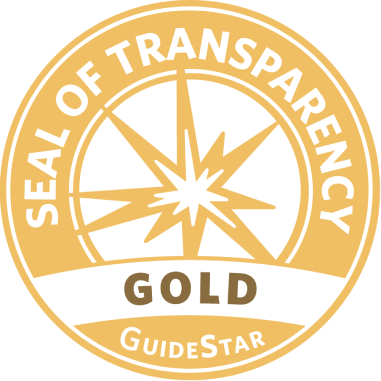Healing from trauma is a deeply personal journey, yet it is rarely accomplished in isolation. For individuals recovering from violence, abuse, or other traumatic experiences, community plays an essential role in providing support, safety, and connection. At the Omid Foundation, we see firsthand how the power of community transforms lives, helping women reclaim their strength and rebuild their futures.
This article explores why community is so vital to the healing process, the benefits of social connection, and how organizations like Omid foster environments where individuals can thrive.
Trauma and Isolation
Trauma often isolates individuals. Feelings of shame, fear, or mistrust can make it difficult to reach out for help. This isolation can worsen the emotional and physical effects of trauma, including depression, anxiety, and even chronic health problems.
How Isolation Affects Recovery:
- Increased Stress: Without support, individuals often struggle to manage the overwhelming emotions associated with trauma.
- Lack of Perspective: Isolation can lead to distorted thinking, such as believing the trauma was their fault or that they are alone in their pain.
- Weakened Resilience: Social connections provide the strength to face challenges; without them, recovery feels much harder.
Healing requires breaking through this isolation and connecting with others who can offer understanding, encouragement, and support.
The Science of Connection
Human beings are inherently social creatures. Connection with others is not just a luxury—it is a biological necessity. Studies show that social bonds positively impact mental and physical health, promoting healing in profound ways.
- The Role of Oxytocin
Oxytocin, often called the “love hormone,” is released during positive social interactions. This hormone:
Reduces stress and anxiety.
Promotes feelings of trust and safety.
Supports emotional regulation, helping individuals process difficult emotions.
- The Impact on the Brain
Community engagement activates areas of the brain associated with reward and pleasure, counteracting the negative effects of trauma. Supportive relationships can even help rewire the brain, promoting resilience and emotional stability.
- Physical Health Benefits
Social connection also improves physical health by:
Reducing inflammation caused by chronic stress.
Strengthening the immune system.
Lowering blood pressure and improving heart health.
These scientific findings underscore the profound healing potential of community.
The Healing Power of Shared Experience
One of the most powerful aspects of community is the sense of shared experience it provides. Knowing that others have faced and overcome similar challenges can reduce feelings of isolation and hopelessness.
Benefits of Shared Experience:
- Validation: Hearing others share their stories helps individuals feel understood and less alone in their struggles.
- Empowerment: Seeing others succeed inspires hope and confidence in one’s ability to heal.
- Perspective: Sharing experiences allows individuals to gain new insights and coping strategies.
At the Omid Foundation, we create spaces where women can connect, share their stories, and draw strength from one another.
Types of Healing Communities
Healing communities come in many forms, from informal social networks to structured programs. Each type of community offers unique benefits to trauma survivors.
- Family and Friends
Close relationships with trusted loved ones provide a foundation of safety and support. These bonds are particularly important for women who may feel vulnerable after trauma.
How Loved Ones Can Help:
Listen without judgment or pressure.
Offer practical support, such as childcare or transportation.
Encourage professional help when needed.
- Peer Support Groups
Support groups bring together individuals with shared experiences, creating a sense of belonging and mutual understanding.
Benefits of Peer Support:
A safe space to share feelings and challenges.
Opportunities to learn from others’ coping strategies.
Building friendships based on trust and empathy.
- Community Organizations
Organizations like the Omid Foundation provide holistic support through counseling, education, and empowerment programs. These structured environments help individuals build the skills and confidence needed for recovery.
Our Programs Include:
Trauma-informed therapy.
Vocational training and education.
Workshops on self-care and resilience.
Building a Supportive Community
Creating a healing community involves more than just gathering people together. It requires an environment of trust, respect, and inclusivity.
Key Elements of a Supportive Community:
- Safety: Physical and emotional safety are essential for individuals to open up and heal.
- Empathy: Community members must listen with compassion and avoid judgment.
- Empowerment: The focus should be on building confidence and independence, not fostering dependency.
- Diversity: A diverse community fosters a broader perspective and greater understanding.
At the Omid Foundation, we prioritize these elements in all our programs, ensuring that every woman feels valued and supported.
The Role of Cultural Context
Cultural norms and traditions play a significant role in shaping how communities approach healing. For women in marginalized communities, cultural understanding is crucial to creating effective support networks.
Culturally Sensitive Approaches:
Recognizing the unique challenges faced by women in specific cultural contexts.
Incorporating traditional practices, such as storytelling or art, into healing programs.
Addressing systemic barriers that may prevent women from accessing support.
Our work at Omid Foundation is rooted in a deep respect for the cultural identities of the women we serve, tailoring our programs to meet their specific needs.
Success Stories: Community in Action
The transformative power of community is evident in the stories of women who have overcome trauma with the support of others.
Sara’s Journey
After fleeing an abusive relationship, Sara struggled with anxiety and self-doubt. Through a peer support group at the Omid Foundation, she connected with other women who understood her pain. Their encouragement helped her regain confidence, pursue vocational training, and start a new chapter in her life.
Fatemeh’s Triumph
Fatemeh faced years of systemic discrimination that left her feeling powerless. Through our empowerment workshops, she learned to advocate for herself and connect with others who shared her struggles. Today, she mentors younger women, passing on the strength she gained from her community.
These stories illustrate how community can turn despair into hope, helping individuals build brighter futures.
Moving Forward: Strengthening Communities
The importance of community in healing cannot be overstated. By fostering connection, empathy, and support, we can help trauma survivors reclaim their lives and contribute to a more compassionate society.
What We Can Do:
- Support Community Programs: Donate to or volunteer with organizations like the Omid Foundation that provide resources for trauma survivors.
- Raise Awareness: Advocate for the importance of community-based healing in public discussions and policies.
- Foster Inclusivity: Create spaces in your own life where others feel safe and supported.
Together, we can build a world where no one has to face trauma alone.
Conclusion
Healing is not a solitary endeavor—it is a collective process that thrives in the presence of a supportive community. At the Omid Foundation, we see the incredible resilience of women who, with the help of their communities, transform their pain into strength.
By prioritizing connection and fostering inclusive spaces, we can ensure that trauma survivors receive the support they need to heal, grow, and thrive. In community, there is strength. In strength, there is hope.

